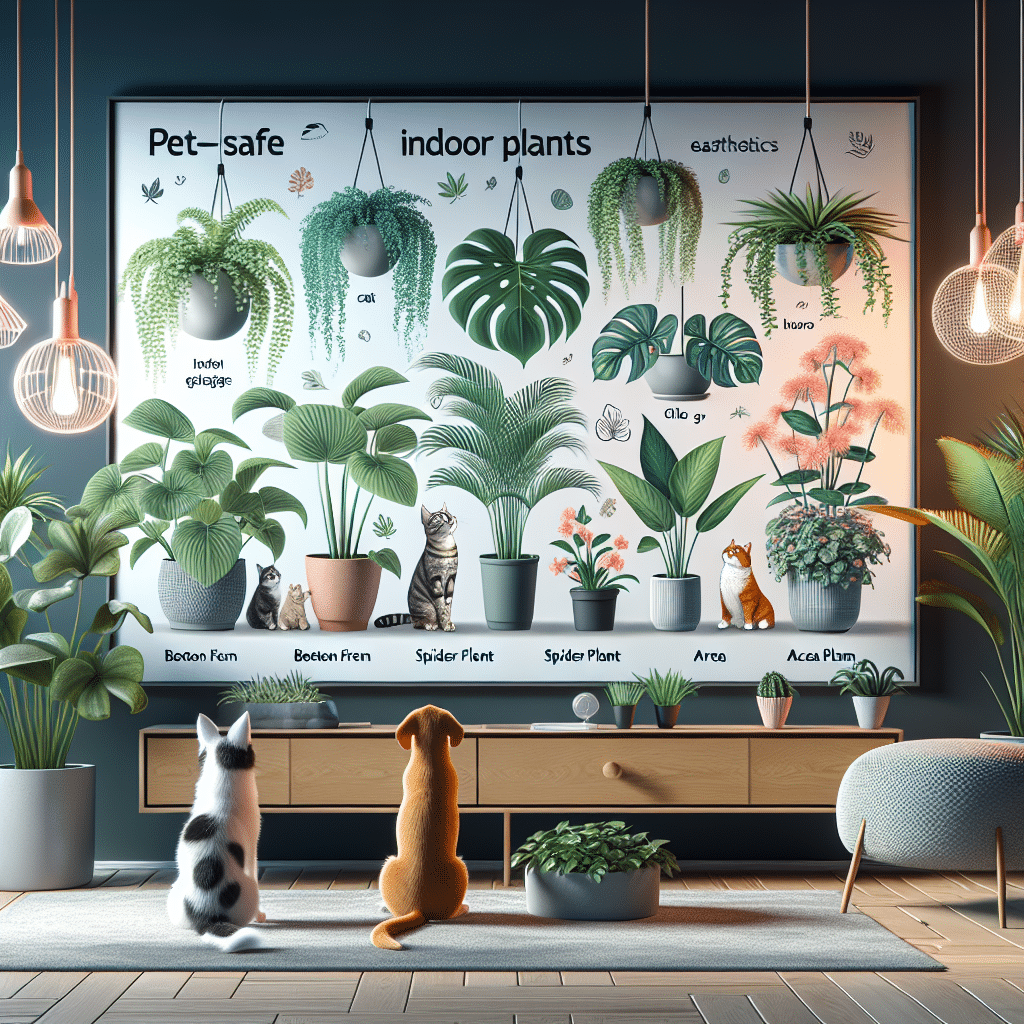Understanding Indoor Plant Lighting for Pet-Safe Varieties
When selecting indoor plants, one of the primary considerations is their lighting requirements. For pet owners, choosing pet-safe varieties further narrows down the options, emphasizing the need for understanding light conditions that suit both plants and household pets. This article will explore indoor plant lighting and present popular pet-safe varieties to enrich your home environment.
The Importance of Light for Plant Growth
Light is essential for photosynthesis, the process through which plants convert light into energy. The spectrum of light, including wavelengths from the sun, influences plant health. In indoor conditions, optimal light can be challenging to achieve, especially with varying species requiring different intensities.
There are primarily three types of light conditions that indoor plants may require:
- Low Light: Ideal for shaded areas, these plants thrive with minimal direct sunlight.
- Medium Light: Plants that prefer bright, indirect sunlight, often placed near east-facing windows.
- High Light: These require direct sunlight for several hours a day and thrive in south-facing windows.
Determining Your Space’s Lighting Conditions
To select appropriate plants, one must evaluate the lighting levels in their home. Here’s how to measure and assess light:
-
Observe Natural Light Patterns: Look for shadows cast by furniture and identify the strongest light sources.
-
Use a Light Meter: If precision is needed, measuring light intensity using a light meter can provide accurate readings.
-
Assess the Time of Day: Different windows may have varying exposure times throughout the day.
-
Consider Seasonal Changes: Light intensity and duration can change with the seasons, affecting plant health.
By understanding the distinct lighting conditions of your space, you can choose the most suitable species.
Recommended Pet-Safe Plants and Their Light Requirements
When opting for pet-friendly plants, several varieties stand out for their resilience and minimal lighting needs.
1. Spider Plant (Chlorophytum comosum)
- Light Needs: Thrives in bright, indirect light but can tolerate low light.
- Description: Known for its arching leaves and baby plant offsets, the spider plant is not only leaf-friendly for your pets but also easy to care for.
2. Boston Fern (Nephrolepis exaltata)
- Light Needs: Prefers bright, indirect light with high humidity.
- Description: The lush, feathery fronds create a tropical feel. This plant is safe for pets and helps maintain air moisture.
3. Parlor Palm (Chamaedorea elegans)
- Light Needs: Adapts well to low to moderate light environments.
- Description: Easy to grow and maintain, the parlor palm features elegant fronds perfect for enhancing indoor aesthetics.
4. Areca Palm (Dypsis lutescens)
- Light Needs: Prefers bright, indirect light but can handle some direct sunlight.
- Description: This fast-growing plant can reach heights of up to six feet, making it an eye-catching addition to any room.
5. Calathea (Calathea spp.)
- Light Needs: Enjoys bright, indirect light; too much direct sunlight can scorch the leaves.
- Description: With its beautifully patterned leaves, calathea adds a colorful touch while being completely pet-safe.
Techniques for Enhancing Indoor Light
Often, natural light may not be sufficient for plants’ needs. Here are effective techniques to enhance indoor light conditions:
-
Use Grow Lights: Installing LED or fluorescent grow lights can supplement natural light. These lights can be customized in terms of light spectrum and intensity.
-
Reflective Surfaces: Position mirrors or reflective walls to bounce light around the room, making it more available to plants.
-
Rotate Plants: Regularly rotating plants ensures even light exposure, promoting balanced growth.
-
Choose Shelf Locations Wisely: Living near windows or elevated surfaces that receive natural light can maximize growth potential.
Seasonal Adjustments
With changes in daylight hours and the position of the sun throughout the year, it’s essential to periodically reassess your plants’ positions. In winter months, consider moving plants closer to the light source to compensate for shorter days.
Troubleshooting Common Lighting Issues
If you notice your pet-safe plants are struggling, they may be signaling for help. Here are common symptoms and solutions:
- Leaves Turning Yellow: This can indicate too much water or insufficient light. Examine your watering routine and consider moving the plant to a brighter spot.
- Spindly Growth: If plants are stretching towards the light, they likely need more exposure. Move them closer to the window or add supplemental lighting.
- Burned Leaves: Scorched edges or discoloration suggest too much direct sunlight. Move the plant to a location with bright, indirect light.
Conclusion
Finding the right plant lighting conditions is essential, especially when considering pet safety. By assessing your home environment, understanding individual plant needs, and utilizing effective lighting techniques, you can successfully cultivate a vibrant indoor garden that is safe for your furry companions. Opt for resilient, pet-friendly varieties, and take steps to improve light conditions as needed, ensuring both plants and pets thrive harmoniously in your space.
